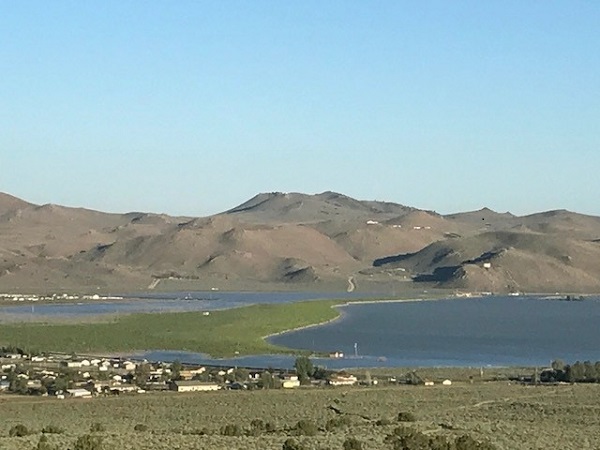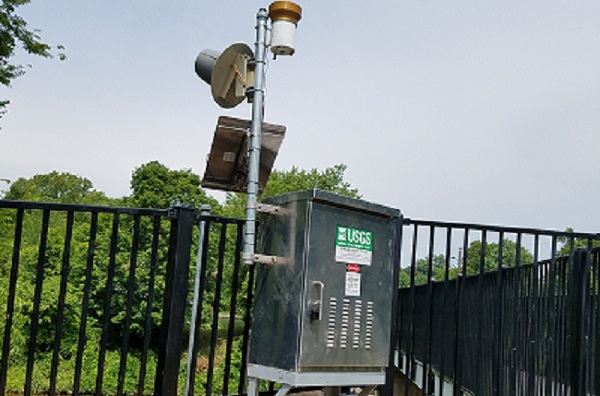Apply now to join our next cohort of Community Science Fellows and Community Leads!

The Team
Denise Ross, Lemmon Valley Flood Relief/Assistance group
Mark Walker, Department of Natural Resources and Environmental Science at University of Nevada – Reno
Results
The focus of this project was to better understand how to control the flooding to the communities situated around Swan Lake in Lemmon Valley. Mark met with the community several times and attended community meetings, reviewed engineering reports and advised Denise and her group on their findings, and acted as a liaison between the community group and the Desert Research Institute (DRI) related to research conducted on flooding in the basin.
Project Outputs
Project Impacts
Reflections
From this project, others may learn better ways to partner with Thriving Earth Exchange for their own purposes. For instance,
The team noted that the following contributed to the success of the project:
However, there were a few key things that the team would do differently if they had the chance to do this project again:
To other teams currently pursuing Thriving Earth Exchange projects and for those that anticipate doing a Thriving Earth Exchange project, the team recommends:
Situated ten miles north of Reno, Nevada, the community of Lemmon Valley sits at the eastern slope of the Sierra Nevada Mountains in a closed basin. A very wet winter in 2017 overwhelmed Swan Lake and flooded nearby homes and basements. The water in some homes remained for months after the rains subsided and a 100-acre field remained submerged under 3 feet of water for months as well. Situated atop impervious clay, runoff is a major concern to residents. Most of the runoff can be traced to development occurring nearby. Recently, a developer proposed building a high-density housing complex in Lemmon Valley that would require raising the structure above flood levels. This has created concern among residents as it could further exacerbate flooding down slope.
The Lemmon Valley/Swan Lake Recovery Community Committee (LVSLRCC) was established to create a unified voice in the community impacted by recent flooding events in Lemmon Valley. The flood group is focused on improving future recovery efforts as well as controlling Swan Lake through pumping, enlarging or deepening. Flash flooding is also a major concern with outdated culverts and drainage systems to blame. The flood group has a good understanding of how the water is flowing in, but struggles with how to eliminate the water when floods hit the closed basin. This understanding will help them take control of the situation to prevent future damages to property and infrastructure. The group has 3 board members and 20 active resident participants.
This project has been conceived and designed in partnership with community leaders at LVSLRCC and Flood Forum USA.

Here’s a guest post from our partner and Director of Flood Forum USA, Harriet Festing:
You’ve probably heard the phrase before; it’s become a cliché. But we want to introduce you to some real-life catalysts for change: our Flood Forum USA group leaders! Here’s what they’ve done:
Susan Liley and Paula Arbuthnot from the Citizens Committee for Flood Relief in De Soto Missouri saved their town. We met them last year when we were just starting out, and their community was struggling to recover from four years of devastating floods. Susan and Paula organized residents, reached out to legislators and contacted the US Army Corps of Engineers. But as Susan explains, “it wasn’t until Flood Forum USA and their partners at TEX, [Thriving Earth Exchange] and The Elevated Studio entered the scene that stuff really started happening…I have BIG hopes for our small town. I can see it having a future now when all I was seeing for it was a dark, wet ending.”
TEX matched the community with specialist scientists from Saint Louis University and the U.S. Geographical Survey. The USGS outfitted a simple but effective flood warning system. At the Citizens Committee’s July meeting, guests included: U.S. Senators Claire McCaskill and Roy Blunt, U.S. Rep. Jason Smith, officials from Jefferson County and the City of De Soto, and folks from the Army Corps, East-West Gateway Council, Union Pacific Railroad, Missouri Department of Natural Resources, Missouri Department of Transportation, USGS and FEMA. They didn’t have enough chairs for all the VIPs!
Tammy Holt Still and Denise Ross of Lemmon Valley Swan Lake Recovery Committee in Nevada worked with their TEX scientist, Mark Walker (University of Nevada), to research and protest a planned housing development in the watershed. Guess what happened? It was rejected by the Washoe County Planning Commission!
Community Lead
Denise Ross with LVSLRCC serves as the community lead for the project.
Scientific Lead
Mark Walker with the Department of Natural Resources and Environmental Science at University of Nevada – Reno is the science lead for the project.
This project is part of one of TEXs’ new cohorts. TEX has partnered with Flood Forum USA which supports grassroots flood groups across the country by helping them develop strategies for a sustainable future. TEX is working with ten of their grassroots groups to connect them with scientists who can help them better characterize neighborhood-level flood risks and work effectively with local decision makers to mitigate those risks.

(c) 2024 Thriving Earth Exchange